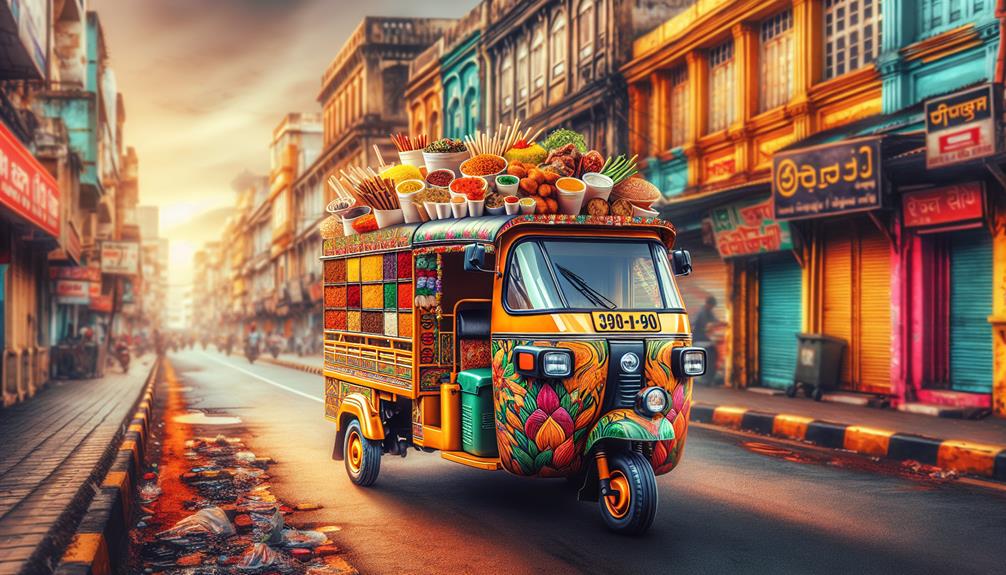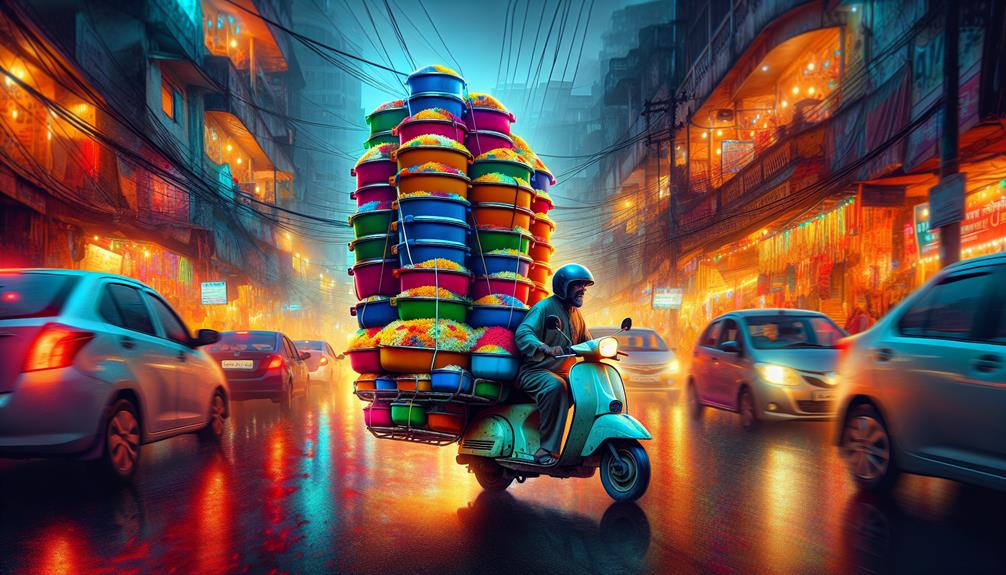
The Royal Feast: a Journey Through India’s Biryani Varieties
February 8, 2024
Spice on Wheels: The Revolution of Indian Food Delivery
February 9, 2024In the rapidly evolving culinary landscape, one trend that has undeniably taken root is the burgeoning popularity of Indian food delivery, perhaps most notably embodied by the beloved dish, Biryani. This aromatic, spiced, layered rice dish has traversed from the grand dining halls of Mughal emperors to the digital platforms of food delivery apps, witnessing a remarkable shift in the way we perceive and consume food. As convenience becomes paramount in our fast-paced lives, this transformative shift is not just revolutionizing our dining habits, but also redefining the contours of the Indian food industry. Yet, an intriguing question lurks beneath this gastronomic evolution: how is this surge in demand for ‘Biryani on the go’ shaping our relationship with traditional dining? This discussion will further probe this intriguing intersection of technology, convenience, and culinary tradition.
The Rise of Indian Food Delivery
As the digital revolution sweeps across the globe, the rise of Indian food delivery services is profoundly reshaping the country’s dining habits and culinary landscape. These services, a blend of modern technology and traditional cuisine, are allowing Indians to enjoy their favorite dishes from the comfort of their homes at a mere tap of a button. Platforms like Zomato and Swiggy have become household names, offering a wide variety of dishes from local and international restaurants. The convenience they offer has led to a shift in dining patterns, with home dining becoming more prevalent. As these platforms continue to innovate and offer personalized dining experiences, they are creating a sense of belonging among their users, making them integral parts of the Indian food culture.
Impact on Traditional Dining Habits
The burgeoning popularity of food delivery services in India is significantly altering traditional dining habits, with a noticeable shift towards convenient, home-based eating. This change is not just a passing trend, but a reflection of evolving lifestyles.
– Less Dining Out: Despite the deep-rooted culture of communal eating, families are reducing their visits to restaurants.
– Increased Variety: Food delivery apps offer a diverse range of cuisines, expanding the palate of the Indian household.
– Cooking Reduction: The convenience of ordering food has led to less time spent cooking traditional meals at home.
– Health Concerns: The ease of ordering food has raised questions about nutritional balance and over-reliance on take-outs.
– Economic Effects: Traditional dining establishments are feeling the pressure and adapting to incorporate delivery services.
These shifts demonstrate the dynamic nature of India’s food culture.
Conclusion
In conclusion, the rejuvenation of Indian food delivery is revolutionizing the realm of dining habits. This culinary transformation is not only about convenience but also a reflection of evolving culture and technology. As this trend takes hold, it continues to redefine the traditional dining experience, fostering a food landscape that increasingly embraces innovation and flexibility. The future of food in India is undoubtedly intertwined with the burgeoning industry of food delivery.

